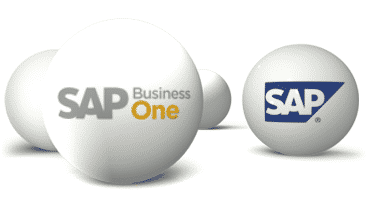SAP Business One (now in version 9.0) now includes a comprehensive integrated Fixed Assets Module that covers end-to-end processing of long term pieces of tangible company property that a company owns or leases and will be utilize for the creation of its revenue. Using SAP Business One, with the Fixed Assets Module enabled will embed the process of fixed asset management into your daily use of the core ERP system, removing the need to manage these properties independently in a separate piece of software, or a spreadsheet solution.

This module is designed for assets that are generally not expected to be consumed or converted to cash any sooner than twelve months, and is capable of handling different accounting areas (local accounting practices and IFRS in parallel). It also includes flexible depreciation calculation methods defined to meet local and international accounting standards and Microsoft Excel© integration tools. Leveraging MS Excel, users can expedite the process of quickly setting up existing assets as opposed to hand keying new ones.
SAP Business One Fixed Assets Module also leverages existing SAP B1 processes such as purchasing. For example a Fixed Asset AP Invoice will automatically create a Fixed Asset Capitalization Document once an AP Invoice is posted, thereby streamlining the necessary posting of corresponding financial transactions related to the fixed asset purchase by the company.
Fixed Assets can be easily enabled by going to Administrationà System Initializationà Company Detailà Basic Initialization Tabà and check on the Enable Fixed Assets Check Box.
This process should be followed by setting up your Fixed Asset Setup and Fixed Asset Master Data information. First will be your account determination. This is in Administrationà Setupà Financialsà Fixed Assetsà Account determination. This is similar in setting up GL Determination for automated posting of transactions in SAP Business One. You must complete this setup before any master data is uploaded in order to avoid any errors. These GL accounts are utilized for necessary financial postings when processing fixed assets in SAP Business One.
After the account determination is configured define the depreciation type in Administrationà Financialsà Fixed Assetsà Depreciation Type. This will determine how depreciation amounts are calculated for specific Fixed Asset items during a depreciation run.
Next, define the Asset Classes and link the account determination group with corresponding depreciation area in Administrationà Financialsà Fixed Assetsà Asset Class. Fixed Asset Group and Depreciation Group can be also setup under the Fixed Asset Master Data in Financialsà Fixed Assetsà Asset Master Dataà Fixed Assets Tab.
In order to upload your fixed Master Data you will need to prepare an excel templates with the following columns: ( Code, Name, Asset Class, Depreciation Group, Asset Group, Depreciation Type, Depreciation Area, Capitalization Date, Depreciation Start Date, Useful Life, Remaining Life). Save your template as a text file (make sure to remove the header line before saving). Then upload your Fixed Asset Master Data in Administrationà Data Import/Exportà Data Importà Import Fixed Asset Master Data from Microsoft Excel by choosing the column sequence as mentioned in the template text file. Using this tool and minor adjustments on the template categories of Fixed Assets Master Data can be uploaded to SAP Business One.
1) New assets – have no depreciation start date
2) Active assets – have a depreciation start date and do not have a retirement date
3) Inactive assets – have a retirement date and the net book value is zero.
Note, that uploading of the Fixed Asset Master Data does not automatically create financial transactions. Journal Entries will need to be entered to balance specific GL accounts accordingly.



